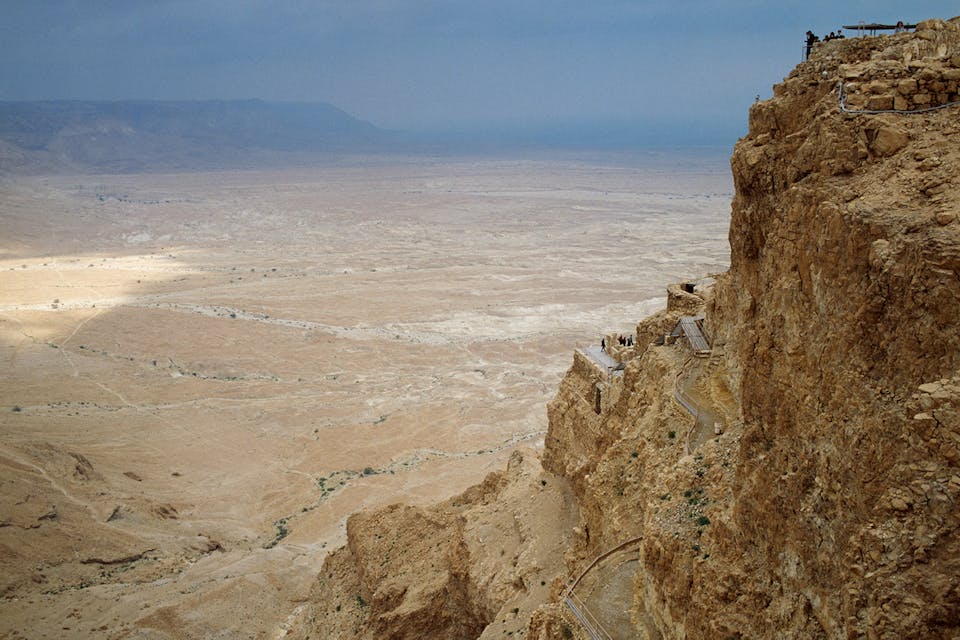
August 14, 2019
What Really Happened at Masada?
The desert fortress has become a powerful symbol of Jewish resistance. A new book examines the evidence to see how much of the story, including the famous mass suicide, is true.
If you’ve read the popular account of the Masada dig by the famed Israeli archaeologist Yigael Yadin, published in 1966, you probably remember the scene where the author finds three skeletons in the ruins of Herod’s desert palace “upon the steps leading to the cold-water pool.” One skeleton, lying by the remains of military armor and a prayer shawl, was a young man, “perhaps one of the commanders of Masada.” The second was a young woman remarkably preserved in the dry climate: “Her dark hair, beautifully plaited, looked as if it had been freshly coiffured,” and by her head was a stain that looked like blood. The third was a child.
“There could be no doubt that what our eyes beheld were the remains of some of the defenders of Masada,” Yadin wrote. The three, in his unforgettable account, were victims of the final battle and mass suicide for which the site is renowned.
But were they? The flat hilltop on the western shore of the Dead Sea remains one of Israel’s top tourist sites and the subject of fascination. Everyone knows Masada, everyone hikes the Snake Path or takes the cable car to the top, and everyone knows what’s supposed to have happened. But outside the world of archaeologists, few know what we really know.